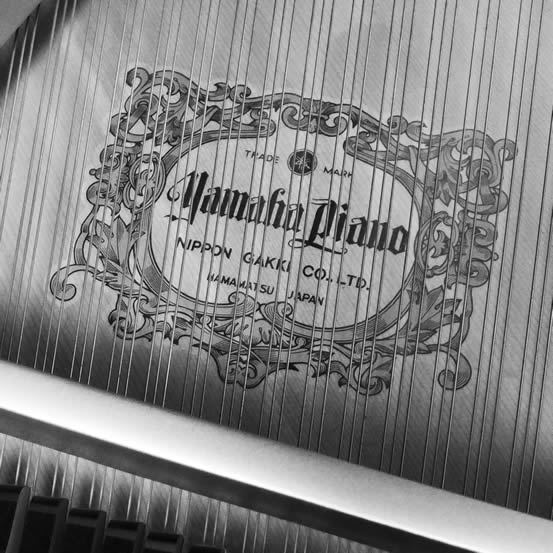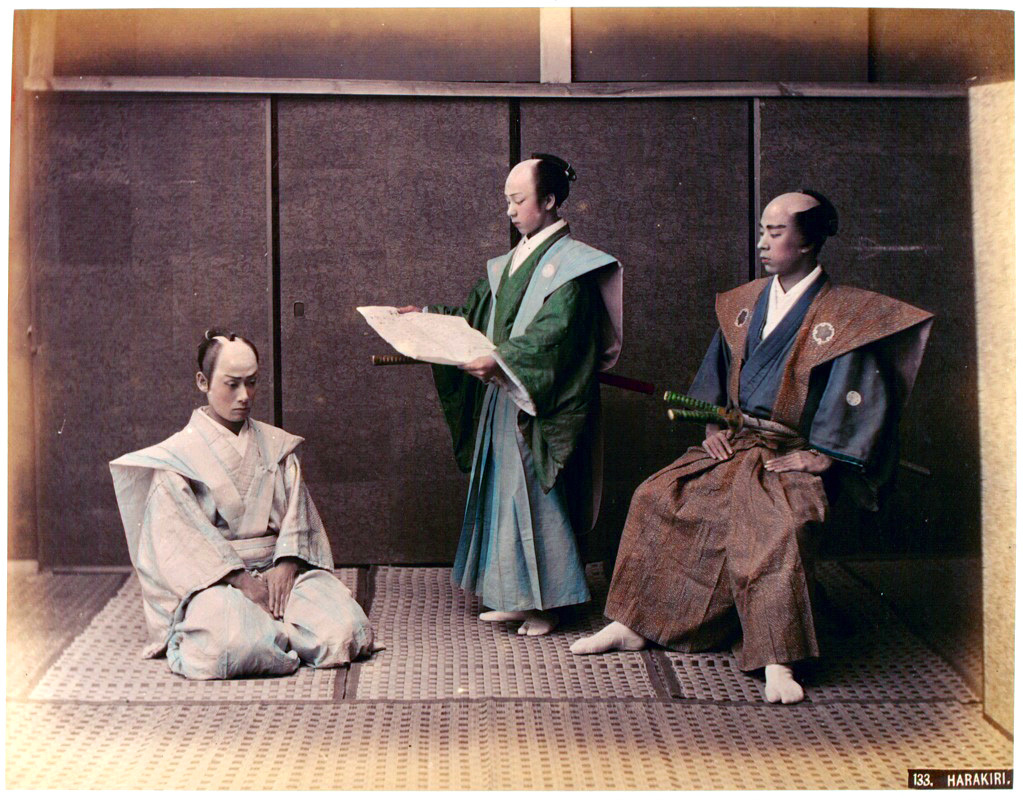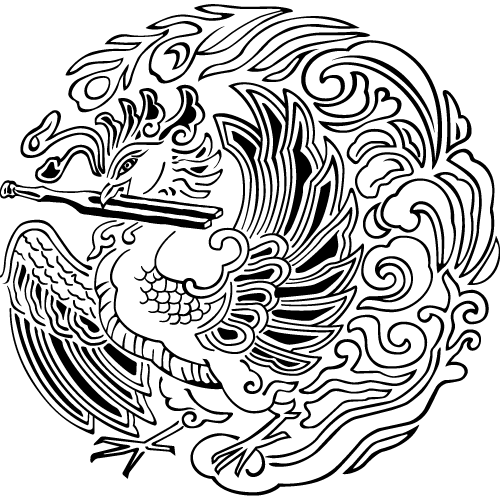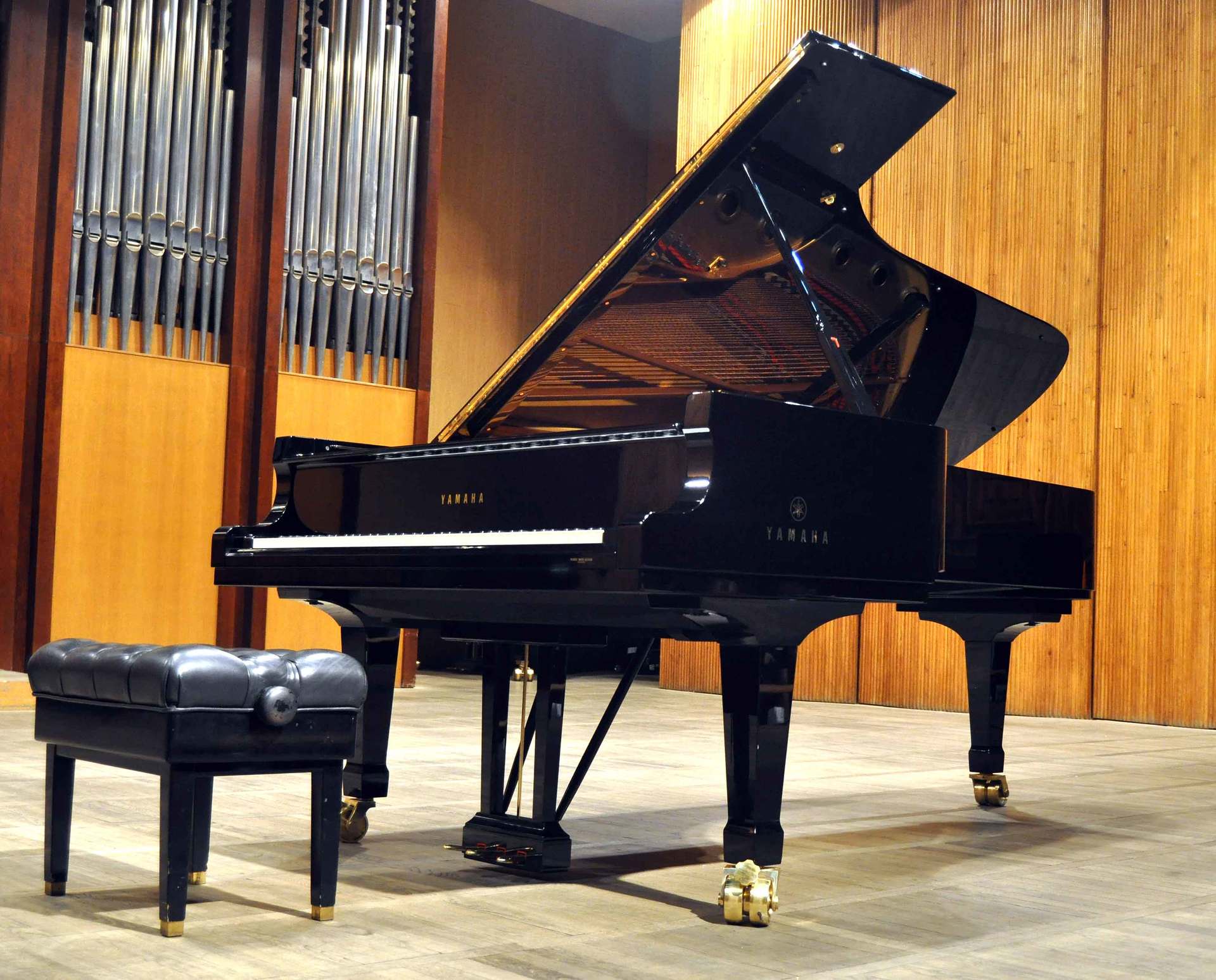YAMAHA Way (# 1): Kendo with Tuning Fork
At the request of readers, we continue our cycle on the history of corporations that have left a significant mark in the global electrical industry. This journalistic essay I dedicate to one of my favorite Japanese giants, Yamaha Corporation. As a biased person, I will not be able to preserve objectivity, therefore I ask a condescending attitude to the periodic occurrence of dipherambes addressed to the company. Probably, I will not be neutral in the assessment of the corporation, its history, as well as its products and managers, and I ask you to make a discount on personal preferences and sincere predisposition to the brand, the consumer, who humanly admires not the simple story of this “monster of world capital” and its achievements.

Today, Yamaha is considered one of the largest manufacturers of electronics, musical instruments and motorcycles. The corporation owes its history to such a wide range of products and areas in which Yamaha works, and more precisely to the talented decisions of several generations of its leaders. The story of Yamaha is a story of ups and downs, periods of prosperity and crises that this corporation has overcome with the stubbornness of a real samurai. In connection with the abundance of important and historically valuable information, I have divided the material into several parts, and this part will be entirely devoted to the founder of the corporation, Torakus Yamaha.
Founder Torakusu Yamaha was born in 1851 in the family of an astronomer who served the noble home of Tokugawa. The father of the founder of the future world giant was of samurai origin, but due to circumstances he preferred the study of the stars to the traditional occupations of the Japanese nobility. Biographers of Thorakus believe that the technocratic worldview and love of science were instilled in the young descendant of samurai by the father. The founder himself said that in his childhood he was surrounded by books and various paternal equipment, and these objects aroused the interest of his inquiring mind, and later predetermined the nature of his activities.

')
Samurai roots (or, as it is now fashionable to say, “genetic memory”) also affected the interests of Thorakus. At the age of 16, the young descendant of an astronomer left his parents' house in order to follow the “sword path” and quickly became a kendo master. Not satisfied with the fact that today one could (with a stretch) be called a sports career, the fencer Yamaha begins to study the repair of watch movements in Nagasaki, under the guidance of an experienced British engineer, whose name does not appear in the sources.

For some time, having achieved a certain skill, the young samurai Yamaha begins to earn a living by repairing watches, after which he finds an additional occupation - the repair of medical equipment. Apparently, sharp scalpels and amputation "tanto" attracted a descendant of a noble family more than tiny gears of Swiss "bulbs". In 1884, Thorakus lived and worked in Hamamatsu, in a modest dwelling located in the backyard of a small shop of medical equipment and instruments.

Need and hunger even in 19th century Japan were able to force the descendants of the samurai to make concessions. Despite the harsh principles of Bushido, Yamaha did not laze and, despising hunger, "pick a toothpick in his teeth." Due to the fact that it was not possible to earn a living thanks to medical equipment, Yamaha continued to repair watches and also worked as a rickshaw at the head physician (in an authentic source - director - author's note) of the local hospital. Considering the origin of Torakus, it is difficult to call such a situation enviable, but it is during this period of life that an event occurs to him that predetermined his further fate and thanks to which we today know about Yamaha.
Perhaps we would never have known who Thoracus was, but one, at first glance, an ordinary case gave the young Japanese a chance to remain in history, and one of the largest corporations in the world. In 1887, the director of the Hamamatsu school addressed Yamaha, who needed to repair the harmonium (the tongue organ). There were no specialists in repairing musical instruments in Hamamatsu, and Torakusu agreed. The cost of a tool of 45 yen suggested a significant amount of repair (for comparison, 20 kilograms of rice cost 1 yen at that time). Torakusu had a long history of understanding the device and, as a result, was able to restore his working capacity, having received an award of 5 yen. In addition, the most valuable of its acquisition was the knowledge about the device of a musical instrument.

The design of the body impressed and interested Yamaha, he realized that in Japan there are enough materials and production capabilities to produce the same. In addition, the young entrepreneur made a bet on the lack of European-type tools in Japan, realizing the commercial profitability of such an undertaking.
For three months, Thorakusu Yamaha and a jeweler, Kisaburo Kawai, who had joined him, created a prototype of the future production model of their first instrument. To assess the quality of the device, Yamaha invited local school teachers, and then gave a presentation at the Hamamatsu Institute. The development did not receive a positive assessment from the staff probably inclined to the west, which prompted the beginner producers of the Japanese domestic harmonium to turn to more reputable experts at the Tokyo Institute of Music. The complexity of the logistics did not frighten the watchmaker and the jeweler, and the instrument was delivered to the capital, some part of the way, having overcome at the hands of the creators.

The calculation of the experts was not justified, the Tokyo musicians as well as the teachers from the Tokaido low rated the first Japanese tongue organ in the world, but the director of the institute praised the mechanical part of the structure and noted that the Yamaha organ lacked precise tuning. For the sake of the future of the Japanese musical industry, Thoracus remained in Tokyo and decided to carefully study musical theory. After a six-month course of ear training, harmony and other important disciplines, Torakusu and his partner-jeweler returned to finalizing the prototype.
Kisaburo and Yamaha were in a hurry, because they knew that a holy place would not remain in the void and for someone else the rising sun could bite into the head a musical startup with harmonium. According to the stories of Yamaha himself, they began work at 5 am, and completed work in the dead of night. The efforts paid off and the new instrument became really successful. In 1888, in the kitchen of an abandoned temple, a semi-hand-made small-scale production began, under the guise of "Yamaha Fukin Seizojo", the Yamaha Organs Factory. It was this, almost a manufactory, that became the first enterprise in Japan to produce European-type musical instruments.
The Japanese government, which was striving for modernization, highly appreciated the initiative of the samurai son and threw development money to Torakus. As a result, handicraft production for the year grew into a factory for 100 jobs, producing 250 harmoniums per year.
By 1890, the company had mastered the production of small pianos and established their trans-Pacific exports to the USA. The trend instruments in the States at that time found their place in the noisy saloons and added a few more yen to the Yamaha piggy bank, allowing them to easily explore the market of Southeast Asia. In 1897, the first rebranding of Yamaha’s enterprise occurred, and the plant moved to a more prestigious building and changed its name to Nippon Gakki, which literally translates as “Japanese musical instruments”.

In 1898, Yamaha has the first trademark, the first logo of the company. This logo depicted the phoenix in the traditional Japanese style, which kept a tuning fork in its beak, as a symbol of the device which made it possible to bring to mind (adjust) the first successful harmonium. The last detail in the symbolism of the company has always been present and remains to this day.

In 1899, Thorakus Yamaha visited the United States and studied the experience of colleagues who produced the piano. Yamaha was an attentive industrialspy by an observer and managed to apply almost everything he saw in the United States. Another event related to the year 1899 put the success of Yamaha’s business into question. One of the founders and investors of the enterprise made decisions to withdraw capital from the company, and convinced several more invested in the enterprise to reinvest capital in another company. The betrayal of investors could have destroyed only the phoenix that had spread its wings, but the samurai of Japanese business, faithful to its offspring, borrowed the missing money and repurchased shares from despicable investors.

In 1902, Nippon Gakki masters the production of pianos. During the entire 20th century, those grand pianos have been awarded the highest awards of international specialized exhibitions since 1904, when the Nippon Gakki instrument won the Louisiana Purchase Exposition Grand Prix in St. Louis. After nearly 100 years, Sviatoslav Richter will admire Yamaha pianos.
Richter plays at Yamaha Center 1989
Pianos and the next expansion of production made it possible to quickly compensate for losses from the betrayal of investors and reach the next stage of the company's formation. Even then, in the world of musical instrument manufacturers, at the very beginning of the industrial era, Nippon Gakki claims to be one of the world leaders in the industry.

Modern Yamaha Grand Piano
In 1914, the great war begins, which opens another market for Thoracus. Japan has lost harmonics, which were traditionally supplied from Germany (Approx. Ed. For those who do not remember - was opposed to Japan in the first world war). The lack of a favorite front-line instrument in Japan and partly in the Entente countries is compensated by Nippon Gakki.

In 1916, the founder of Nippon Gakki, a man who to some extent created himself, and to some was a product of the era in which he lived, the pioneer of the Japanese musical instrument industry, the founder of one of the largest corporations in the world, Torakusu Yamaha, died suddenly. Starting with a tiny workshop, he built a corporation that was destined to become one of the technological locomotives of the twentieth century. 2 months after the death of Thorakus, the co-founder of the company, a friend and partner of Thorakus, Kisaburo Kawai, passed away. So in 1916, Vice President Nippon Gakki - Chiyomanu Amaro became the helm of the “vessel”, floating through the muddy waters of tough competition in a very big and promising future.
to be continued ...

Today, Yamaha is considered one of the largest manufacturers of electronics, musical instruments and motorcycles. The corporation owes its history to such a wide range of products and areas in which Yamaha works, and more precisely to the talented decisions of several generations of its leaders. The story of Yamaha is a story of ups and downs, periods of prosperity and crises that this corporation has overcome with the stubbornness of a real samurai. In connection with the abundance of important and historically valuable information, I have divided the material into several parts, and this part will be entirely devoted to the founder of the corporation, Torakus Yamaha.
The son of an astronomer with samurai roots
Founder Torakusu Yamaha was born in 1851 in the family of an astronomer who served the noble home of Tokugawa. The father of the founder of the future world giant was of samurai origin, but due to circumstances he preferred the study of the stars to the traditional occupations of the Japanese nobility. Biographers of Thorakus believe that the technocratic worldview and love of science were instilled in the young descendant of samurai by the father. The founder himself said that in his childhood he was surrounded by books and various paternal equipment, and these objects aroused the interest of his inquiring mind, and later predetermined the nature of his activities.

')
Samurai roots (or, as it is now fashionable to say, “genetic memory”) also affected the interests of Thorakus. At the age of 16, the young descendant of an astronomer left his parents' house in order to follow the “sword path” and quickly became a kendo master. Not satisfied with the fact that today one could (with a stretch) be called a sports career, the fencer Yamaha begins to study the repair of watch movements in Nagasaki, under the guidance of an experienced British engineer, whose name does not appear in the sources.

For some time, having achieved a certain skill, the young samurai Yamaha begins to earn a living by repairing watches, after which he finds an additional occupation - the repair of medical equipment. Apparently, sharp scalpels and amputation "tanto" attracted a descendant of a noble family more than tiny gears of Swiss "bulbs". In 1884, Thorakus lived and worked in Hamamatsu, in a modest dwelling located in the backyard of a small shop of medical equipment and instruments.

Need and hunger even in 19th century Japan were able to force the descendants of the samurai to make concessions. Despite the harsh principles of Bushido, Yamaha did not laze and, despising hunger, "pick a toothpick in his teeth." Due to the fact that it was not possible to earn a living thanks to medical equipment, Yamaha continued to repair watches and also worked as a rickshaw at the head physician (in an authentic source - director - author's note) of the local hospital. Considering the origin of Torakus, it is difficult to call such a situation enviable, but it is during this period of life that an event occurs to him that predetermined his further fate and thanks to which we today know about Yamaha.
From artisanal prototype to state support of a startup
Perhaps we would never have known who Thoracus was, but one, at first glance, an ordinary case gave the young Japanese a chance to remain in history, and one of the largest corporations in the world. In 1887, the director of the Hamamatsu school addressed Yamaha, who needed to repair the harmonium (the tongue organ). There were no specialists in repairing musical instruments in Hamamatsu, and Torakusu agreed. The cost of a tool of 45 yen suggested a significant amount of repair (for comparison, 20 kilograms of rice cost 1 yen at that time). Torakusu had a long history of understanding the device and, as a result, was able to restore his working capacity, having received an award of 5 yen. In addition, the most valuable of its acquisition was the knowledge about the device of a musical instrument.
The design of the body impressed and interested Yamaha, he realized that in Japan there are enough materials and production capabilities to produce the same. In addition, the young entrepreneur made a bet on the lack of European-type tools in Japan, realizing the commercial profitability of such an undertaking.
For three months, Thorakusu Yamaha and a jeweler, Kisaburo Kawai, who had joined him, created a prototype of the future production model of their first instrument. To assess the quality of the device, Yamaha invited local school teachers, and then gave a presentation at the Hamamatsu Institute. The development did not receive a positive assessment from the staff probably inclined to the west, which prompted the beginner producers of the Japanese domestic harmonium to turn to more reputable experts at the Tokyo Institute of Music. The complexity of the logistics did not frighten the watchmaker and the jeweler, and the instrument was delivered to the capital, some part of the way, having overcome at the hands of the creators.

The calculation of the experts was not justified, the Tokyo musicians as well as the teachers from the Tokaido low rated the first Japanese tongue organ in the world, but the director of the institute praised the mechanical part of the structure and noted that the Yamaha organ lacked precise tuning. For the sake of the future of the Japanese musical industry, Thoracus remained in Tokyo and decided to carefully study musical theory. After a six-month course of ear training, harmony and other important disciplines, Torakusu and his partner-jeweler returned to finalizing the prototype.
Kisaburo and Yamaha were in a hurry, because they knew that a holy place would not remain in the void and for someone else the rising sun could bite into the head a musical startup with harmonium. According to the stories of Yamaha himself, they began work at 5 am, and completed work in the dead of night. The efforts paid off and the new instrument became really successful. In 1888, in the kitchen of an abandoned temple, a semi-hand-made small-scale production began, under the guise of "Yamaha Fukin Seizojo", the Yamaha Organs Factory. It was this, almost a manufactory, that became the first enterprise in Japan to produce European-type musical instruments.
The Japanese government, which was striving for modernization, highly appreciated the initiative of the samurai son and threw development money to Torakus. As a result, handicraft production for the year grew into a factory for 100 jobs, producing 250 harmoniums per year.
The first bloom of Nippon Gakki
By 1890, the company had mastered the production of small pianos and established their trans-Pacific exports to the USA. The trend instruments in the States at that time found their place in the noisy saloons and added a few more yen to the Yamaha piggy bank, allowing them to easily explore the market of Southeast Asia. In 1897, the first rebranding of Yamaha’s enterprise occurred, and the plant moved to a more prestigious building and changed its name to Nippon Gakki, which literally translates as “Japanese musical instruments”.

In 1898, Yamaha has the first trademark, the first logo of the company. This logo depicted the phoenix in the traditional Japanese style, which kept a tuning fork in its beak, as a symbol of the device which made it possible to bring to mind (adjust) the first successful harmonium. The last detail in the symbolism of the company has always been present and remains to this day.

In 1899, Thorakus Yamaha visited the United States and studied the experience of colleagues who produced the piano. Yamaha was an attentive industrial

In 1902, Nippon Gakki masters the production of pianos. During the entire 20th century, those grand pianos have been awarded the highest awards of international specialized exhibitions since 1904, when the Nippon Gakki instrument won the Louisiana Purchase Exposition Grand Prix in St. Louis. After nearly 100 years, Sviatoslav Richter will admire Yamaha pianos.
Richter plays at Yamaha Center 1989
Pianos and the next expansion of production made it possible to quickly compensate for losses from the betrayal of investors and reach the next stage of the company's formation. Even then, in the world of musical instrument manufacturers, at the very beginning of the industrial era, Nippon Gakki claims to be one of the world leaders in the industry.

Modern Yamaha Grand Piano
In 1914, the great war begins, which opens another market for Thoracus. Japan has lost harmonics, which were traditionally supplied from Germany (Approx. Ed. For those who do not remember - was opposed to Japan in the first world war). The lack of a favorite front-line instrument in Japan and partly in the Entente countries is compensated by Nippon Gakki.

Samurai dies when should
In 1916, the founder of Nippon Gakki, a man who to some extent created himself, and to some was a product of the era in which he lived, the pioneer of the Japanese musical instrument industry, the founder of one of the largest corporations in the world, Torakusu Yamaha, died suddenly. Starting with a tiny workshop, he built a corporation that was destined to become one of the technological locomotives of the twentieth century. 2 months after the death of Thorakus, the co-founder of the company, a friend and partner of Thorakus, Kisaburo Kawai, passed away. So in 1916, Vice President Nippon Gakki - Chiyomanu Amaro became the helm of the “vessel”, floating through the muddy waters of tough competition in a very big and promising future.
to be continued ...
Source: https://habr.com/ru/post/373167/
All Articles